
In music, counterpoint is the relationship between two or more musical lines which are harmonically interdependent yet independent in rhythm and melodic contour. It has been most commonly identified in the European classical tradition, strongly developing during the Renaissance and in much of the common practice period, especially in the Baroque. The term originates from the Latin punctus contra punctum meaning "point against point", i.e. "note against note".
In the theory of Western music, a mode is a type of musical scale coupled with a set of characteristic melodic and harmonic behaviors. Musical modes have been a part of western musical thought since the Middle Ages, and were inspired by the theory of ancient Greek music. The name mode derives from the Latin word modus, "measure, standard, manner, way, size, limit of quantity, method".

The Hawaiian Islands are an archipelago of eight major islands, several atolls, numerous smaller islets, and seamounts in the North Pacific Ocean, extending some 1,500 miles from the island of Hawaiʻi in the south to northernmost Kure Atoll. Formerly the group was known to Europeans and Americans as the Sandwich Islands, a name that James Cook chose in honor of the then First Lord of the Admiralty John Montagu, 4th Earl of Sandwich. Cook came across the islands by chance when crossing the Pacific Ocean on his Third Voyage, on board HMS Resolution; he was later killed on the islands on a return visit. The contemporary name of the islands, dating from the 1840s, is derived from the name of the largest island, Hawaiʻi Island.

The lesser grey shrike is a member of the shrike family Laniidae. It breeds in South and Central Europe and western Asia in the summer and migrates to winter quarters in southern Africa in the early autumn, returning in spring. It is a scarce vagrant to western Europe, including Great Britain, usually as a spring or autumn erratic.
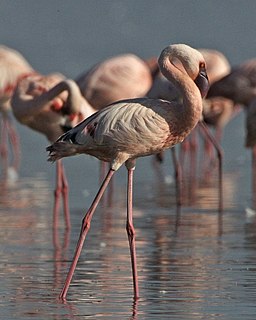
The lesser flamingo is a species of flamingo occurring in sub-Saharan Africa and northwestern India. Birds are occasionally reported from further north, but these are generally considered vagrants.

Pheidole is a genus of ants that belongs to the ant subfamily Myrmicinae. The genus is widespread and ecologically dominant. It probably includes more than a thousand species. The genus first evolved in the Americas, eventually spreading across the globe.

Erythema multiforme (EM) is a skin condition of unknown cause; it is a type of erythema possibly mediated by deposition of immune complexes in the superficial microvasculature of the skin and oral mucous membrane that usually follows an infection or drug exposure. It is an uncommon disorder, with peak incidence in the second and third decades of life. The disorder has various forms or presentations, which its name reflects. Target lesions are a typical manifestation. Two types, one mild to moderate and one severe, are recognized.

Neurotrichus is a genus of shrew-like moles. It is classified, together with the fossil genus Quyania, in the tribe Neurotrichini of the subfamily Talpinae. The only living species is the American shrew-mole (N. gibbsii) of the northwestern United States and British Columbia. A fossil species, ?Neurotrichus columbianus from the Hemphillian of Oregon, was placed in the genus in 1968, but this animal is now thought to be more closely related to the Chinese fossil genus Yanshuella. Another fossil species, Neurotrichus polonicus from the Plio-Pleistocene of Poland, was assigned to Neurotrichus in 1980, and a second Polish Pliocene species, N. minor was added in 1993. Although it was proposed in 2004 to place these two species in Quyania, this has not been universally accepted. Because the name N. minor was preoccupied, it was replaced with Neurotrichus skoczeni in 2010.
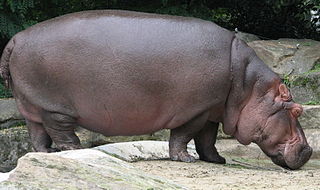
Hippopotamus is a genus of artiodactyl mammals consisting of one extant species, Hippopotamus amphibius, also known as the hippopotamus, and several extinct species. It belongs to the family Hippopotamidae, which also includes the pygmy hippopotamus and a number of extinct genera.

Efraasia is a genus of basal sauropodomorph dinosaur. It was a herbivore which lived during the middle Norian stage of the Late Triassic, around 210 million years ago, in what is now Germany. It was named in 1973 after Eberhard Fraas, who during the early twentieth century collected what were the original type specimens.

Ulmus minorMill., the field elm, is by far the most polymorphic of the European species, although its taxonomy remains a matter of contention. Its natural range is predominantly south European, extending to Asia Minor and Iran; its northern outposts are the Baltic islands of Öland and Gotland, although it may have been introduced here by man. The tree's typical habitat is low-lying forest along the main rivers, growing in association with oak and ash, where it tolerates summer floods as well as droughts.

Palaeosaurus is a genus of indeterminate archosaur known from two teeth found in either the Magnesian Conglomerate or the Avon Fissure Fill of Clifton, Bristol, England. It has had a convoluted taxonomic history.
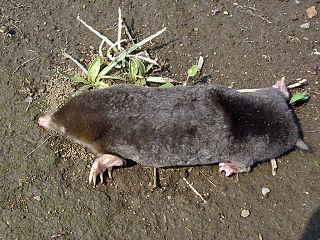
The small Japanese mole is a species of mammal in the family Talpidae. It is endemic to Japan. Even though they are extinct in central Tokyo, they are found in the grounds of the Imperial Palace.

The lesser naked-backed fruit bat is a species of megabat in the family Pteropodidae. It is found in Indonesia and Papua New Guinea.
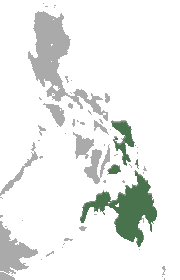
The lesser musky fruit bat is a species of megabat in the family Pteropodidae. It is endemic to the Philippines.
Lacustrelix is a genus of air-breathing land snails, terrestrial pulmonate gastropod mollusks in the family Camaenidae.
Lacustrelix yerelinana is a species of air-breathing land snails, terrestrial pulmonate gastropod mollusks in the family Camaenidae. This species is endemic to Australia.

Camaenidae is a family of air-breathing land snails, terrestrial pulmonate gastropod mollusks in the superfamily Helicoidea, the typical snails and their allies. This is one of the most diverse families in the clade Stylommatophora.
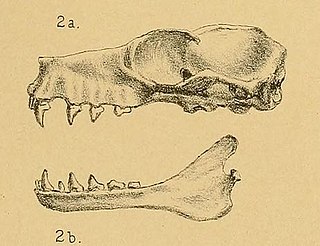
The minor epauletted fruit bat is a species of megabat in the family Pteropodidae. It is found in Zambia, Tanzania, Mozambique and Kenya.
The minor red bat is a species of bat from the family Vespertilioninae. It is found in the Bahamas, Dominican Republic, Haiti, and Puerto Rico, though there are only six known individuals in the latter. Hurricanes, habitat destruction, and human population growth are several factors leading to a decreasing population trend, and the minor red bat is listed as vulnerable by the IUCN Red List due to ongoing population reduction and a small geographic range. The minor red bat is a solitary, insectivorous species that forages in open areas and rests among the leaves of a tree. It is a swift flier, though it is not highly maneuverable. The minor red bat is possibly conspecific with the Seminole bat, Eastern red bat, and Desert red bat.
















